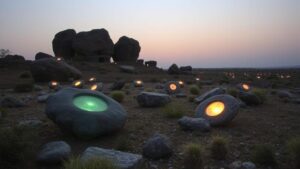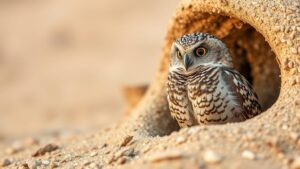Cryptids in context: bridging the gap between folklore and biology.
Cryptids in Context: Bridging the Gap Between Folklore and Biology
Cryptids, creatures whose existence is based on anecdotal evidence rather than scientific proof, occupy a unique space at the intersection of folklore and biology. These beings often arise from local myths, legends, and the human tendency to explore the unknown. In this article, we will examine how cryptids can be understood through both scientific inquiry and cultural narratives, drawing parallels that bridge these two seemingly disparate realms.
The Allure of Cryptids: A Cultural Perspective
Across the globe, cultures have developed rich tapestries of folklore populated with enigmatic beings. From the Loch Ness Monster of Scotland to the Chupacabra in Puerto Rico, these creatures often embody the fears, hopes, and values of the societies that conceive them. For example, the legend of Bigfoot in North America has not only become a significant part of local lore but has also sparked numerous investigations, often reflecting humanitys desire to connect with nature.
According to a 2023 survey by the Pew Research Center, approximately 30% of American adults believe in the existence of cryptids. This prevalence emphasizes how deeply entrenched these myths are in modern consciousness, inviting inquiry into why such creatures continue to captivate our imaginations.
Documented Cryptids: The Case Studies
- The Loch Ness Monster: First reported in the 6th century, Nessie has become a symbol of mystery in Scotland. Despite extensive searches, a 2022 study utilizing eDNA failed to find conclusive evidence, yet communities remain enchanted by the tale.
- The Chupacabra: Originating in Puerto Rico in the 1990s, this creature is said to drink the blood of livestock. Various reports have suggested that these sightings align with specific environmental changes, indicating a possible link between the legend and introduced species like the mongoose.
- The Mokele-Mbembe: Known as “one who stops the flow of rivers,” this creature from the Congo River Basin resembles a sauropod dinosaur. While scientists maintain skepticism, ongoing expeditions continue to search for evidence, blending folklore with ecological investigation.
Scientific Inquiry: The Search for Evidence
While many cryptids are evaluated through the lens of folklore, some researchers apply biological principles to investigate the plausibility of these creatures. field of cryptozoology, although not widely accepted by the scientific community, seeks to study these elusive beings through observation and the collection of evidence.
For example, in 2019, scientists used advanced imaging technology to search for the elusive Tasmanian Tiger, believed extinct since the 1930s. This illustrates how the principles of biology and technology can sometimes converge with cryptid research, fostering the possibility that some legends may be rooted in real, undiscovered animal species.
The Blurred Lines: Folklore, Biology, and Historical Context
The interplay between folklore and biology highlights the complexity of our understanding of unknown species. Many creatures labeled as cryptids may be variations of known animals or species that have not been formally classified. For example, the Mokele-Mbembe legend may select for the giant river-dwelling animals such as hippos or large monitor lizards.
Also, the historical context of these legends often shapes their perception. During the age of exploration in the 19th century, many tales emerged from the encounters between indigenous cultures and European colonizers, leading to the exaggeration of existing creatures. This blending of storytelling and observation can be likened to how scientific hypotheses are developed–sometimes intuitive, often requiring verification.
Community and Conservation: The Role of Cryptids
Interestingly, the belief in cryptids can also encourage conservation efforts. Take the case of the Yeti in the Himalayas; its cultural significance has led to initiatives aimed at preserving the environment of the region. By placing importance on these mythical creatures, communities may advocate for the protection of their habitats and biodiversity.
In some areas, cryptids have transformed into tourist attractions, generating economic benefits while fostering conversations about ecological preservation. So, the realms of folklore and biology can collaborate to create meaningful impacts on conservation efforts.
Actionable Takeaways
To bridge the gap between folklore and biology regarding cryptids, consider the following:
- Engage with local legends to appreciate the cultural heritage and understand community values.
- Support scientific efforts aimed at exploring undiscovered species and habitats.
- Promote conservation initiatives that might be inspired or supported by local cryptid folklore.
Ultimately, while the existence of cryptids remains unproven, their impact on culture, ecology, and community deserves recognition. This exploration not only deepens our understanding of biodiversity but also acknowledges the rich narratives that shape our relationship with the natural world.


